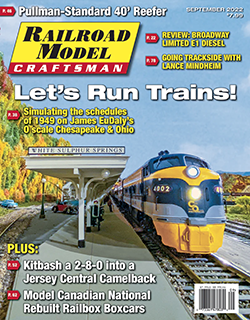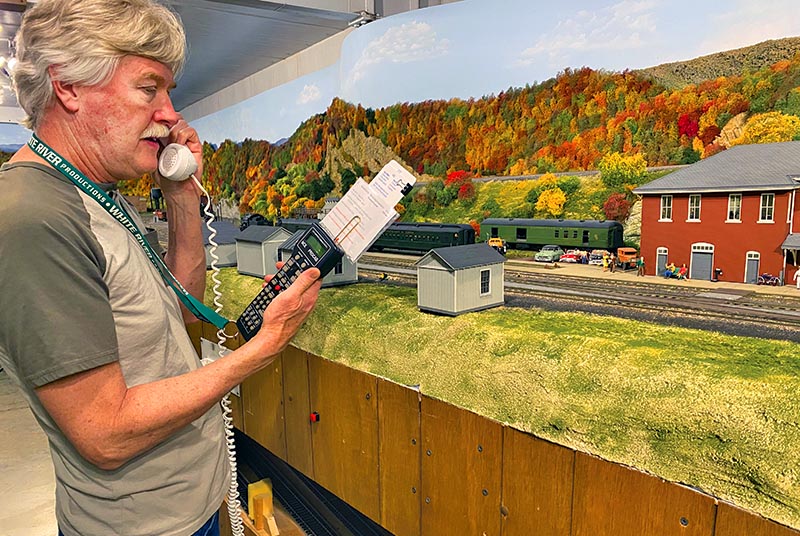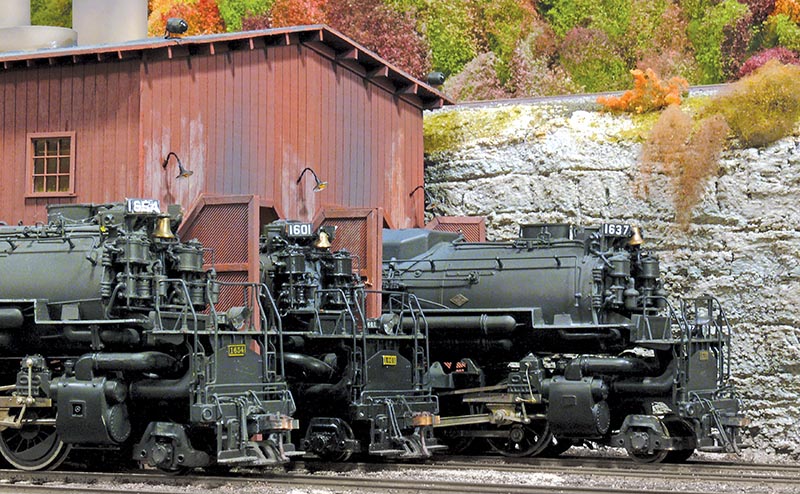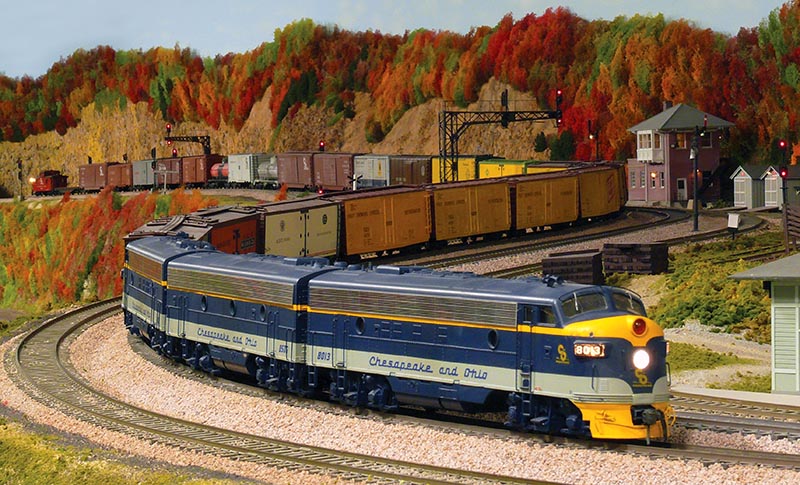 By James F. EuDaly, MMR/photos by the author
By James F. EuDaly, MMR/photos by the author
Long ago, when I was planning my layout, Chesapeake & Ohio was the road of choice for a number of reasons. It had a lot of appeal, including an interesting steam roster, long hopper trains, a wide variety of passenger trains, and Allegheny mountain scenery. Several of my favorite locations were chosen: Gauley, Hawk’s Nest, Sewell, Hinton, and White Sulphur Springs, W.Va.; and Alleghany, Va. Even though I was a novice layout planner at the time, it was obvious that long trains running through these locations on a once-in-a-lifetime layout would leave no room for industries. After all, even a small coal mine demands a huge space in O Scale.
While in the planning stages, I acquired employee timetables from the late 1940s and early 1950s, and developed a 24-hour timetable for Hinton, the centerpiece of the railroad. The employee timetables listed 47 scheduled arrivals and departures at Hinton in a 24-hour period, so that became the target while planning the layout’s operations. In addition, there were eight to 12 loaded coal trains, each requiring a pusher from Hinton to Alleghany, along with equal numbers of westbound empty hopper trains, and light pusher engines returning to Hinton from Alleghany. All of the loaded and empty coal trains ran as extras.
During this time period the terminal at Hinton was servicing about 100 steam engines every 24 hours. All of that adds up to a lot of action on a busy double-track railroad, and that’s what I wanted to capture.
When I consulted with my local friends who were “operators,” they seemed aghast that essentially no freight car switching was planned. My response was, “Some railroads move freight cars; mine is going to move trains.”

ABOVE: Lon EuDaly (son of the author) is reading a message to a dispatcher to obtain signals to run a train. A typical message would be: “At Russell Extra 1654 east is ready to depart with 34 and 1 (34 loads, 1 empty being the caboose), crew is Lon.” The large clip on the throttle holds all the paperwork needed for the trip across the railroad.
So in 1983 a 35×50’ Butler building was constructed for the future C&O empire. The layout was built with three “layers,” as opposed to three decks, in order to preserve the open feeling with a high ceiling and no interior posts. The lower level contains 13 stub-end staging tracks that allow the movement of trains to and from the main lines, along with four through tracks for Extras. It also has three of the modeled locations on the New River Subdivision: Gauley, Hawk’s Nest, and Sewell. The middle level is dedicated to Hinton, and includes the West Yard for westbound freights along with the engine terminal facilities, East or Avis Yard for eastbound freights, and finally Hinton Station (the division headquarters) between the two yards.
All main line runs terminate at Hinton, so crews operate New River Subdivision trains on the lower level or Alleghany Subdivision trains on the upper level, and all trains change crews at Hinton.
The upper level includes the run over the Alleghany Subdivision through White Sulphur Springs and Alleghany. In the locations I chose to model there were no interchanges with other railroads, and I had no room for the few branch lines or industries that were located on this part of the C&O.

ABOVE: Three C&O H-8s pose at the Mallet House ready for a run to Clifton Forge. Two of them will be a puller/pusher for a drag freight (coal loads). The pusher will cut off at Alleghany, turn on the turntable, and return to Hinton as a light engine.
Several articles on my layout have been published in the past that cover the layout plans and include photographs of the railroad; this feature will describe the paperwork that supports running about 100 trains in a four-session 24-hour cycle. The fast clock is set at 2:1, so there are four three-hour operating sessions that cover a 24-hour day in the life of the C&O through Hinton.
A typical crew of eight to 12 operators includes two dispatchers, two or three hostlers, and the rest of the crew members are assigned to running trains on the main line. The ability to run 40-foot-long loaded or empty coal trains as extras (that are really “extra”) makes the crew size very flexible. Extras run round-and-round, with loads eastbound, and empties and the occasional iron ore train westbound.
All scheduled trains (manifest and passenger runs) cycle eastbound one session and then westbound the next session, operating to and from the 13-track staging yard on the lower level.
My favorite schedule is the session running from midnight to 6:00am, when four sections of the George Washington converge at Hinton shortly after midnight, so the paperwork illustrated here will be for that session. I prepare all paperwork before the session begins, and it all starts with the Hinton Hostler page. The Hinton Hostler can be one of the busiest jobs on the railroad, and represents the lion’s share of what little switching there is on this part of the C&O…



